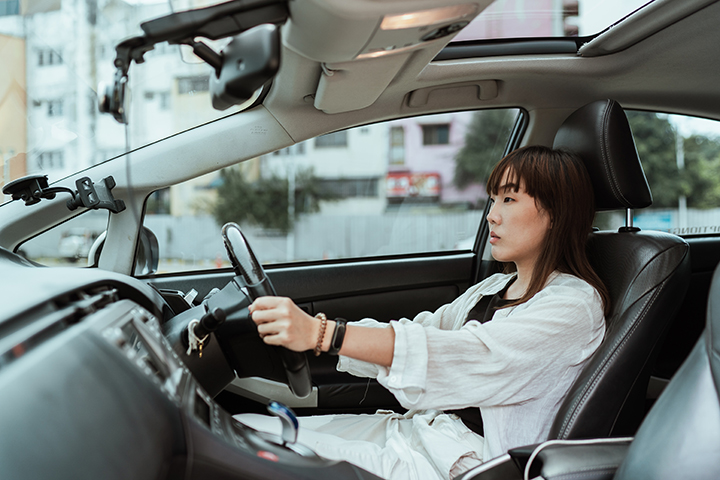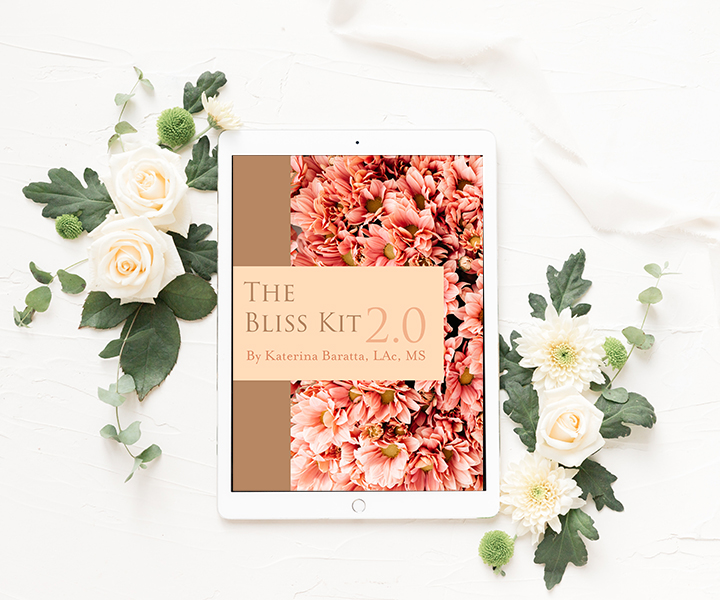How to Get Past Driving Anxiety
I was recently asked to talk about driving anxiety on Instagram.
And it opened up a much bigger discussion about the roots of anxiety and our ultimate predicament in life, so I’ve turned it into a blog post that goes even further.
This article will be especially helpful to you if you ever feel anxious while driving, as a passenger, while flying, or in response to other people’s emotions (we’re talking road-rage here).
But it also taps into the larger underlying issues that lead to anxiety in the first place, and what we can do to grow through anxiety instead of letting anxiety take over.
So if any of those topics interest you, keep reading.
The issue of driving anxiety points at a much deeper question: Where does anxiety even come from?
And the answer is that anxiety is related to our physical body’s survival instincts.
Given the statistics we know about driving safety, it’s understandable that driving would elicit anxiety.
Maybe you’ve even been in an accident or two, and the stress of that experience left the residue of trauma on your nervous system.
But whether you’ve had a direct experience or not, every time you hear a report that tells you how dangerous driving can be your nervous system will naturally respond with alarm.
And with repeated exposure, your stress response gets activated whenever you have to drive somewhere.
Your heart rate goes up, your breath becomes shallow, you may begin to sweat.
Your brain is switching gears when this happens.
The flow of energy to the prefrontal cortex —where rationality and critical thinking come from—is turned down in order to send more energy into the amygdala, which activates your survival mode.
And if you don’t have the opportunity to consciously release that alarm and reset your nervous system after stress comes up, it ends up getting stuck as an emotional memory, which gets activated every time you have to drive anywhere (or even think about driving anywhere).
What’s more, other people’s energy is palpable when you’re on the road.
And when other people throw road-rage in your direction, it can add significant additional stress that leads to anxiety, especially if you’re an empathetic person.
Someone honks and your whole body tenses up.
Another person yells at you for making a mistake, and you end up rehashing it in your mind for hours or even days afterward, whether or not they were right.
The good news is that there are strategies you can use to move past driving anxiety.
But until you know how to work with it, driving anxiety will continue to make your life more difficult every time you need to go somewhere.
Still, the solution to this is not to stay home.
Your choice is either to embrace driving anxiety as an opportunity for personal growth, or keep living with it.
And yes, this is a choice.
Because the vast majority of suffering —some might even argue all of human suffering— is created by the mind, including anxiety.
And driving anxiety is a potent example of how we cause ourselves unnecessary suffering.
If you’re honest with yourself and really look at the situation, you see that most of the time you’re actually perfectly safe while driving.
The only reason you feel anxious is because you’re thinking about what could maybe happen in the future.
And those thoughts are activating the alarm centers in your body as if your imagination were real.
Because your body doesn’t know the difference between something real and something imagined.
Either way, the same physiological stress response happens.
And the anxiety you feel as a result is your mind and body working together to try to protect you from whatever is causing that stress (in this case, driving).
The tricky thing is that this can be a totally subconscious process.
Your body’s alarm system can be activated just by looking at a car, or opening a car door.
And when the alarm system goes off, your mind races in with 1000 thoughts to try to help you find the solution that will turn it off.
Let’s break this process down a little more.
Your physical body is always trying to direct you toward pleasure and away from pain because that is what is most likely to extend survival.
And the mind’s function is to help you navigate your body through the physical plane of reality to increase the likelihood of survival.
This is a great system when it works properly.
Because of course, you want to extend your life as long as possible, life is miraculous!
It’s wonderful to be alive and be able to witness the scope of experiences that life has to offer you.
The challenge is that when you become so focused on survival, you miss out on experiencing your actual life while you’re living it.
Because while your body’s #1 goal might be survival, if you make that your #1 goal, you end up living in fear.
You find yourself either feeling fear consciously, or you’re trying to avoid feeling fear in the future.
But the fear of feeling fear is itself a fear, so either way you’re constantly afraid.
And you cause yourself a tremendous amount of stress and internal pressure being afraid.
The truth is, your body will one day die, and you will experience pain.
But these facts don’t cause suffering or anxiety in and of themselves.
It’s the rejection of the truth that causes anxiety and makes you suffer.
A much easier path is to accept that pain happens in life.
But you’re so afraid of pain that you keep pushing against the possibility of it.
And as a result, your body’s alarm system goes off, your mind tries to find a solution, and you feel anxious yet again.
But there is no solution to the inevitable.
There is no way out.
So you can spend your whole life worrying about every possible outcome, to try to protect yourself from the inevitable…OR you can throw up your hands, give up, surrender to the truth, and fall into a full embrace of what life is offering you, right here and now.
This is the choice you have when you step into a car.
Would you like to keep bracing for possible impact that most likely will not come?
Or would you like to enjoy the ride?
Call me presumptuous, but I’m going to guess you’d rather enjoy the ride.
So how can you get past driving anxiety?
The short answer is that it takes a lot of practice.
You have to rewire your nervous system so alarm bells don’t go off in your whole body every time you have to hit the road.
But they’re going to keep going off until you’ve done some work to learn how to let uncomfortable emotions pass through you instead of resisting them.
And the best time to practice this is when you’re not driving.
If you try to calm your driving anxiety when you’re already feeling anxious driving, you’re just going to distract yourself from the task at hand, which will very likely lead to events that make you even more anxious.
The practices that help you rewire your nervous system and change your response will automatically translate into driving.
But to start, it’s much easier and more effective to focus on stressful events that don’t feel quite as threatening.
Because if you pay attention, you’re going to notice that your inner alarm system is actually going off all day long.
It goes off any time something happens that you don’t like or don’t expect.
It even goes off when you think about things that you want, because you stress out about the fact that you don’t have whatever that thing is.
So the vast majority of the stress you feel isn’t because you’re in any sort of real danger.
It’s just that your mind has decided things should be other than they are.
You’re resisting what is.
Another thing that contributes to driving anxiety, of course, is that you take on and resist the energy of the people driving around you.
And though this is a bit more nuanced, some of the practices that help with this particular issue also help with driving anxiety in general.
So let’s start here.
Any time someone else’s emotional reactions get to you, it’s a great opportunity to practice relaxing, releasing, letting go.
Instead of responding, instead of cursing out the other drivers, or trying to “fix” the discomfort you feel inside of yourself by replaying all the things that went wrong, see if you can just let the discomfort arise and be, without judgement.
You might also find it helpful to notice your thought patterns and question them.
Ask yourself if those thoughts are really helping the situation.
What other perspectives might be available to help you interpret this situation in a gentler, more loving, open way?
In a situation with aggressive drivers, you might expand your awareness to include the fact that you have no idea what that other person is going through, what happened to them to make them act that way.
Clearly they’re having a hard time or they wouldn’t be so worked up.
Really, their actions and reactions have nothing to do with you, even if you made a mistake.
If they’re upset it means they are in pain, end of story.
If they weren’t in pain, they wouldn’t act that way.
You can also ask yourself: “Am I okay right now?”
If you have the wherewithal to ask yourself this, you are okay.
If you weren’t okay, you wouldn’t have the space to ponder that question, you’d be dealing with getting out of the situation at hand.
These are good questions to ask yourself both on and off the road.
And whenever you work on reducing stress and anxiety off the road, it’ll make it easier to deal with it while you’re driving.
So let’s talk about how to do that in more detail.
To reduce stress and anxiety, start to cultivate space inside of yourself to notice when you feel stress arise in your body.
Step back from identifying completely with your thoughts and feelings, and see if you can just start to observe them instead.
Meditation practices can be very helpful for this purpose because when you try to be quiet you notice how loud and active your mind really is.
And by giving yourself an intentional practice time every day, you begin to create some space between you and your thoughts and feelings, which eventually helps you let them go.
The next step is to intentionally rewire your neurology so you aren’t activated every time you think about riding in a car.
There are quite a few techniques to do this, and different techniques work for different people.
I work 1-on-1 with patients to help them figure out which techniques will work best for them.
Some of my favorites that you can explore on your own include doing a body-scan meditation, qigong shaking practice, mantra/affirmations (click here for a free PDF guide), Trauma Release Exercises (TRE), and the techniques you can find in the (free) Bliss Kit PDF.
In my experience, one of the most powerful strategies is this:
Choose a safe and quiet environment when you can intentionally activate the alarm into your body by thinking about the thing that makes you anxious (like driving).
Then allow yourself to witness your body react to it.
As you witness the uncomfortable emotions come up, your body starts to release the stored energy of those emotions automatically.
Once you feel safe enough to allow those feelings to flow, your body knows exactly what to do to clear them out and purify itself.
This may include crying, moaning, shaking, laughing, coughing, gagging, or any other physical reaction you can imagine.
You’ll watch your body do its thing, and then, after a little while it’ll stop and you’ll feel a heckofalot better than you did when you started.
This sounds uncomfortable, and I’ll be honest, it can be.
Which is why it’s a lot easier to do when you have a supportive guide, especially when you first start doing this work.
But do you know what’s worse?
It’s much more uncomfortable to fight against the truth of your experience, which is what you’ve been doing your whole life and is the reason you feel stressed and anxious in the first place.
You won’t believe how clear, open, free, and blissful you feel when you finally let that shizz go.
You have to allow yourself to feel it if you want to heal it.
Because you can’t clear something out that you aren’t willing to look at or even acknowledge.
Another strategy you can try is what’s called Tonglen meditation.
Pema Chödrön often refers to Tonglen in her books (which, btw, are life-changing and you should check out her work if you haven’t already).
You practice Tonglen by inviting other peoples’ pain into your own experience, physically feeling it in your body, and as a response, sending out compassion, love, and peace instead of resistance.
This practice helps you build up tolerance for discomfort, which is an essential part of healing anxiety.
Tonglen meditation also serves as training grounds for you to become what is called a Bodhisattva, or spiritual warrior, which means you don’t just help yourself with this practice, but you actually benefit the whole world in the process.
And there’s another Buddhist practice where you spend time meditating on your own death.
I know.
Add this to the list of strategies that sound like the last thing you want to do.
But the truth is, you’re causing yourself much more pain in your resistance.
What’s happening here is that you know these practices will make you feel uncomfortable.
They will most likely cause you emotional pain.
And your mind is trying to steer you away from this pain because all pain is interpreted as being threatening to your survival.
What makes this even more complicated is that, in a way, your mind is right.
Because when you do these practices you will be forever transformed.
And transformation means that one thing ends so something new can begin.
Something dies so something new can be born.
But remember, your mind’s job is to protect you from death, even if it’s only an imagined death, and even if it’ll actually help you live a much better life.
Your mind is trying to convince you that if you accept the truth, that you willingly invite in the worst thing that could possible happen to you.
But the thing is, it’s not the worst thing.
Surprisingly, it could be the best thing ever.
And it’s not going to happen in the future.
It’s already happening, right now.
Because change is the ultimate Truth of life.
Your body isn’t the same body you had when you were a baby.
Your likes and dislikes aren’t the same as they were even a year ago.
Your physical body is constantly changing.
Your personality is constantly changing.
And by identifying yourself with these aspects of your experience that are constantly changing you are carrying pain and fear with you everywhere you go.
Because it’s in clinging to specific images that you have of yourself that you cause more suffering.
To relieve stress and anxiety, you have to let things change.
The truth is, anything that changes is not really you.
You think those things are you, but they are actually just ideas you carry about yourself, and ideas are nothing but thoughts.
They are literally just figments of the imagination, images made up by your mind.
And your body isn’t really you, either.
You are the life that animates your body.
But one day that essence of you will leave the body and all that will be left is a collection of atoms in a configuration that’s going to keep changing, just like it’s been doing forever.
Who are you then?
This is another good question to ask yourself if you want to get past anxiety.
At first it will probably make you more anxious.
That’s understandable.
You’ve built your sense of security on all of these ideas over the course of your whole life.
And dismantling those walls can be scary, which is another reason it can be so helpful to have an experienced guide helping you as you do this work.
But don’t worry. You don’t have to delve into the depths of existentialism right away.
Most people benefit from a combination of strategies.
And different strategies are appropriate for different people at different times.
Again, this is why it’s so helpful to have an experienced guide helping you navigate your healing journey.
Okay.
I’ve got one more strategy for you, and you’re going to love it if all of the rest made you cringe.
One of the gentlest forms of support I know for driving anxiety is the herb California poppy.
California poppy is a mildly sedative herb that’s safe enough to use on children*.
Still, don’t let its mild nature deceive you!
Just 3 drops of California poppy tincture can take the edge off of any travel anxiety, including both driving and flying.
If the small dose doesn’t do anything for you within a few minutes, you can increase up to 60 drops per hour (up to 4x/day) to support you through your trip.
*Not to be used during pregnancy. Please check with a trained healthcare professional before taking any new herbs or supplements, especially if you have preexisting conditions.
As with any herbal remedy, however, the lifestyle changes you make alongside the herbs are going to be more effective at healing the root of the issue long-term.
So start doing the inner work.
There are many places to start, as we’ve discussed, and it really doesn’t matter what you do, just so long as you start doing something.
Or you can keep living with driving anxiety.
The choice is yours.
Want personalized support to figure out the strategies that will work best for you?
Click here to set up a free consultation and find out if a Personalized Wellness & Healing Journey is right for you.
I can’t wait to see where this takes you!





